“Weightlessness was unbelievable. It's physical euphoria: Nothing about you has any weight. You don't realize that you are weighed down all the time by yourself, and your organs, and your head. Your arms weigh down your shoulders. In space simulation, you get to fly like Superman! You're hanging in the air! It's the coolest thing.” -Mary Roach
As October comes to an end, the nights grow longer (at least in the northern hemisphere) and Halloween approaches. There are wonders all around us, and the need to separate good science from bad. There's plenty in the rear-view mirror, like this month’s Starts With A Bang podcast and a week of incredible articles from Starts With A Bang! Here’s a recap of all we’ve covered:
- Could the Universe be a simulation? (for Ask Ethan),
- The evidence for water on Mars is overwhelming (for Mostly Mute Monday),
- No, the LHC hasn't shown that we live in a multiverse (by Sabine Hossenfelder),
- Dark matter rises to its biggest challenge... and succeeds,
- New supernova results: is the Universe not accelerating?, and
- Why doesn't dark matter form black holes?
And there's plenty more on the way, so stay tuned for Saturn's changing hexagon, a potential new study on Planet Nine, and of course 2016's Halloween costume! (Remember, Patreon donors at the $20/month level and up get an autographed Halloween photo delivered to them. Hint hint.) Now with all that said, let's get right into our comments of the week!
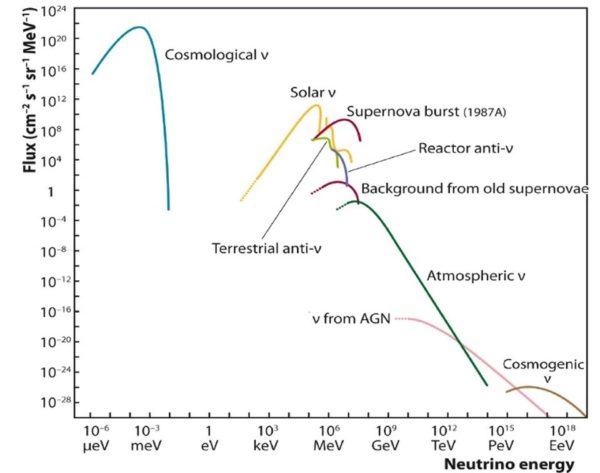 There are many natural neutrino signatures produced by stars and other processes in the Universe. But note the unique and unambiguous signal of “reactor anti-neutrinos.” Image credit: IceCube collaboration / NSF / University of Wisconsin, via https://icecube.wisc.edu/masterclass/neutrinos.
There are many natural neutrino signatures produced by stars and other processes in the Universe. But note the unique and unambiguous signal of “reactor anti-neutrinos.” Image credit: IceCube collaboration / NSF / University of Wisconsin, via https://icecube.wisc.edu/masterclass/neutrinos.
From Omega Centauri on looking for aliens with neutrinos: "A strong case can be made that even if fusion becomes feasible, it will in all likelihood be outcompeted by solar energy on cost. If this happens with our aliens, there might not be a neutrino signal to pickup."
If the neutrinos one produced by fusion are the same as the ones produced in the Sun -- i.e., if they're part of the proton-proton chain or the CNO cycle -- they're going to get swamped. But if you produce fusion neutrinos through a different reaction, like lithium-deuterium fusion, for example, you could pick out the unique neutrino signature. Of course, if the aliens go beyond fission or fusion, this method isn't going to work at all. As you all found out with yesterday's new piece, however, looking for aliens in the electromagnetic portion of the spectrum has its... pitfalls.
 The "blue light" phenomenon photographed in two different location. Courtesy of this insane website: http://www.educatinghumanity.com/2013/08/blue-light-ufo-miami-florida.h….
The "blue light" phenomenon photographed in two different location. Courtesy of this insane website: http://www.educatinghumanity.com/2013/08/blue-light-ufo-miami-florida.h….
From Alan L. on what I might have seen a decade ago in New Mexico: "My mistake. I meant to say marsh gas."
Marsh gas or swamp gas can certainly produce blue-colored light, as well as the famed will-o'-the-wisp effect. (It's not just for Magic: The Gathering, folks!) But the New Mexico desert isn't really known for its marshes or swamps, nor are marsh gas/swamp gas lights known for moving in the sky.
SpooooOOOOooooky, isn't it?
(But then again, for all I know it could've been an isolated auto dealership testing its lights and then turning them off.)
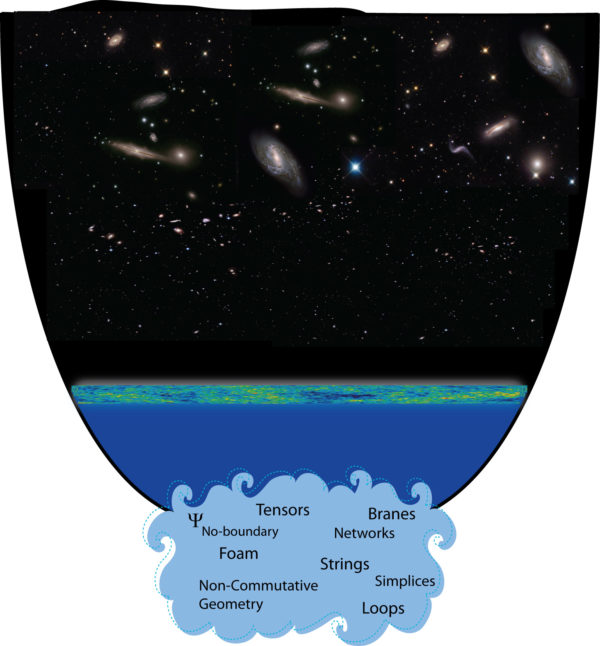 A singularity is where conventional physics breaks down, whether you're talking about the very beginning of the Universe and the birth of space and time or the very central point of a black hole. Image credit: © 2007-2016, Max Planck Institute for Gravitational Physics, Potsdam.
A singularity is where conventional physics breaks down, whether you're talking about the very beginning of the Universe and the birth of space and time or the very central point of a black hole. Image credit: © 2007-2016, Max Planck Institute for Gravitational Physics, Potsdam.
From Wow on a 4D creature transporting our forlorn 3D selves: "[I]f WE took a 2D collage picture object and “teleported it” by moving it through the 3rd dimension then it would only reappear if we translated it in the 2D plane parallel at a rate no faster than if we’d moved it in the same 2D plane. And if the 2D plane were curved into a sphere, we could transport that surface image to the other side of the planet in a time of the diameter divided by velocity, rather than Pi times the radius divided by the velocity."
This is an excellent point. If the speed of light is a limiting speed in any number of dimensions -- not just 3 -- then there's a limit to how fast a teleportation could take place. Assuming everyone moves through time at the same rate, and a higher-dimensional creature couldn't just fast-forward or re-wind the clock at will, and assuming that space isn't catastrophically crumpled in the higher dimensions, motion through the fourth dimension would effectively be limited by approximately our 3D limits given the speed of light.
 Image credit: Wikimedia Commons user Lunch, of a 2-D projection of a Calabi-Yau manifold, one popular method of compactifying the extra, unwanted dimensions of String Theory.
Image credit: Wikimedia Commons user Lunch, of a 2-D projection of a Calabi-Yau manifold, one popular method of compactifying the extra, unwanted dimensions of String Theory.
Of course, if string theory is right, the Calabi-Yau manifold is exactly as horrifically crumpled and compactified as you might imagine for this exact violation of traditional, flat-space relativity to occur. Not in our three dimensions, mind you, but in the other ones. It might be conceivable to take a very crooked path through the other dimensions and wind up someplace very, very disconnected from our own, while still obeying special relativity.
Good thing string theory is too scary for me to entertain seriously, even on Halloween weekend.
From ketchup on the Planck length: "I am interested in the justification for this statement about the fundamental quantum limit of 10^-35 meters. This distance is known as the Planck length, and is obtained from the gravitational constant, Planck’s constant, and the speed of light. But the idea that one cannot even in principle explore distances below this length is speculation that has no empirical justification."
There's no experimental or empirical justification for this because we've never achieved the energies to test it, but there's a good theoretical reason for this limit. I want you to do the following thought experiment: start by thinking about the Compton wavelength of a particle. This is basically asking "what is the length scale that corresponds to scattering" for a particle? The length scale is inversely proportional to mass (or energy), so higher energies mean shorter wavelengths. At some point, your energy can get so high that your lengths get short enough that the Compton wavelength becomes smaller than the Schwarzschild radius corresponding to that energy scale.
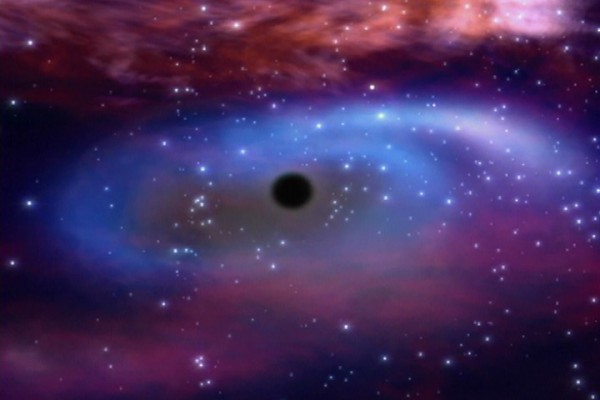 Illustration credit: ESA, retrieved via http://chandra.harvard.edu/resources/illustrations/blackholes2.html.
Illustration credit: ESA, retrieved via http://chandra.harvard.edu/resources/illustrations/blackholes2.html.
And all of a sudden, you've made a black hole. So that's why you can't explore distances below that, because if you made something energetic enough to scatter with those small distance scales, it would collapse into a black hole rather than scatter. That's why the Planck scale really is a limit. At least, if General Relativity and Quantum Mechanics are right.
 Image credit: Kyle Hill of http://sciencebasedlife.wordpress.com/2011/09/21/religion-and-science-n….
Image credit: Kyle Hill of http://sciencebasedlife.wordpress.com/2011/09/21/religion-and-science-n….
From G on the simulation hypothesis and... cults: "The technology cults are engaged in the fundamental dishonesty of offering religion in the guise of science. When Deepak Chopra plays this game we laugh; but when Ray Kurzweil and Nick Bostrom do likewise, what then? Take them seriously, because they sell salvation in a computer rather than in a “healing-energy crystal”?"
If you can test it, experiment on it and either come up with tests that validate or repudiate it then it becomes very interesting: it becomes science. If you can't, however, if all you can do is use it to make sweeping, dreamy statements about what might be in an untestable fashion, you're just telling stories. My facebook is filled with ads from scam artists like "Elysium Health" and the like, trying to get me to buy into infinite life and the technological singularity.
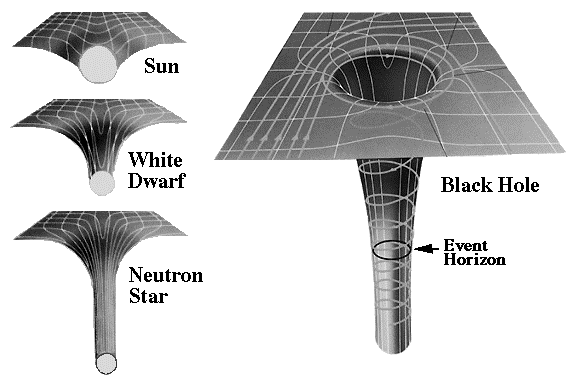 Image credit: from anrophysics 2008-09, via Bangkok Patana School http://www.patana.ac.th/.
Image credit: from anrophysics 2008-09, via Bangkok Patana School http://www.patana.ac.th/.
There's only one kind of singularity I believe in, and it isn't a technological one. My own personal beliefs are that we all came from nothing -- although I don't came to understand what nothingness is fully -- and that we all head back into nothing at the ends of our lives. Somehow, I think that a singer like Emmylou Harris captures this better than anything Ray Kurzweil or Elon Musk has ever opined on the topic.
From PJ on the fate of the Schiaparelli lander: "A pity Schiaparelli has been lost."
There were some people contending, even after the Mars Reconnaissance Orbiter found the dark spot where it impacted, that perhaps Schiaparelli wasn't lost after all. I think that, unfortunately, the HiRISE image above shows us what we all feared: this thing is nothing more than catastrophic wreckage now.
It's a tragedy anytime someone's life's work and dreams are dashed. In the case of Schiaparelli, it comes at a cost of hundreds of millions of dollars and the dreams of a team of close to 100 people. Very sad, indeed.
 Image credit: La Truffe, via http://latruffe666.free.fr/media/Mixed_by_La_Truffe_-_4th_Dimension.gif.
Image credit: La Truffe, via http://latruffe666.free.fr/media/Mixed_by_La_Truffe_-_4th_Dimension.gif.
From greg on extra dimensions: "How can we scientifically prove that we live in a world with no additional dimensions? Could it be that we really live in 11 large dimensions world, but “see” only 4 of them as a limitation of our experiments equipment?"
There are effects we can look for as evidence that we live in a Universe with more than three dimensions. If you want those dimensions to be large -- as in, larger than the Planck length -- they will have effects on our Universe that we could uncover with advanced enough technology or experiments. If you want to prove that we live in a world with no additional dimensions, you can't, but you can constrain them to the point of irrelevance: if it doesn't affect your Universe, that might as well be the equivalent of it not existing.
The Standard Model particles and their supersymmetric counterparts. Exactly 50% of these particles have been discovered, and 50% have never showed a trace that they exist. Image credit: Claire David, of http://davidc.web.cern.ch/davidc/index.php?id=research.
From Wow on the standard model: "The standard model requires higher dimensions, but rolled up to work, therefore if the standard model is correct, we have extra dimensions."
Not quite. There are a lot of things that are consequences of the standard model that are nicer in extra dimensions, and that offer some fun circumstantial evidence for it, such as the Wess-Zumino-Witten model. If you want to do fun things like break symmetry, give mass to particles and make your field theory work properly, you can do it in 3+1 dimensions, like Wess and Zumino did back in 1971. But it's messy. It's hideous. It's like trying to do electricity and magnetism without complex numbers. But if you add in one extra dimension, it becomes easy and beautiful, and that's why "Witten" got added to the model in the mid-1980s.
But there's no physical difference, it's just a beauty one. You may be thinking that if string theory is correct, then we have supersymmetry at some scale, or that if QCD is correct, then we have glueballs (bound states of gluons alone) at some scale. But nothing we've discovered requires extra dimensions, they just make things prettier.
 While stars might cluster in the disk and the normal matter might be restricted to a nearby region around the stars, dark matter extends in a halo more than 10 times the extent of the luminous portion. Image credit: ESO/L. Calçada.
While stars might cluster in the disk and the normal matter might be restricted to a nearby region around the stars, dark matter extends in a halo more than 10 times the extent of the luminous portion. Image credit: ESO/L. Calçada.
From Louis Wilbur on dark matter simulations: "Readers of this blog should be aware of the new paper titled “The Mass-Discrepancy Acceleration Relation: a Natural Outcome of Galaxy Formation in CDM halos” at https://arxiv.org/abs/1610.07663."
This is a completely different set of independent simulations, by a consortium that includes Carlos Frenk and Julio Navarro, the "N" and the "F" of NFW, the first universal dark matter profile. What's interesting in there is that the evolution their simulations predict for the g_baryon vs. g_acceleration relation with redshift differs dramatically from the Keller and Wadsley simulations, but both simulations predict the McGaugh et al. relation at low redshifts. Unfortunately, we only have good measurements of rotation curves at redshifts of 0.1 and less.
It's also worth pointing out that this independent relation is not the same as a realistic rotation curve; both dark matter groups still struggle with that with a large fraction of their simulated galaxies.
 The correlation between gravitational acceleration (y-axis) and the normal, baryonic matter (x-axis) visible in an assembly of 153 galaxies. The blue points show each individual galaxy, while the red show binned data. Image credit: The Radial Acceleration Relation in Rotationally Supported Galaxies, Stacy McGaugh, Federico Lelli and Jim Schombert, 2016. From https://arxiv.org/pdf/1609.05917v1.pdf.
The correlation between gravitational acceleration (y-axis) and the normal, baryonic matter (x-axis) visible in an assembly of 153 galaxies. The blue points show each individual galaxy, while the red show binned data. Image credit: The Radial Acceleration Relation in Rotationally Supported Galaxies, Stacy McGaugh, Federico Lelli and Jim Schombert, 2016. From https://arxiv.org/pdf/1609.05917v1.pdf.
From Anonymous Coward on galaxy size and rotation: "As I recall, the McGaugh team’s observations had many galaxies of various sizes, including ones that were supposedly dominated by dark matter and had very little baryonic matter. Are there galaxies like that in the McMaster simulation or other ones, and do they also obey the SPARC acceleration law in simulation?"
No, they don't. None of these simulations go below about 10% the Milky Way's mass in terms of the galaxies they reproduce, and there's a good reason for that: computational power. If you want to simulate a smaller galaxy as a part of the cosmic web, you need greater resolution, which means you need more particles of lower mass. We're already running trillion-particle simulations, and to get down to the lower ranges, we'd need to go up to 10 quadrillion particle simulations. That is... beyond our computational capabilities. But with Moore's law or quantum computers, who knows? We might be there by the 2030s.
The figure representing the confidence in accelerated expansion and in the measurement of dark energy (y-axis) and matter (x-axis) from supernovae alone. Image credit: Nielsen, Guffanti and Sarkar, 2016, from the preprint at https://arxiv.org/pdf/1506.01354v3.pdf.
From Naked Bunny with a Whip on supernovae and dark energy: "Silly Bunny momentarily forgot Betteridge’s law of headlines."
From Sinisa Lazarek on the same topic: "i like this quote from wiki: “… To a busy journalist hunting for real information a question mark means ‘don’t bother reading this bit’ ”"
I wouldn't have needed to write this piece at all if it weren't for bad journalism that actively stated that the new supernova paper meant that dark energy wasn't real. There has been some catastrophically bad science journalism happening over this past week, and I feel like I'm the only voice of reason out there. But does that mean I have to stop using question marks, or no one will read me?
Or does it just mean I need to make sure that the answer to everything that does end with a question mark has 'no' as the answer, to keep Betteridge's Law true?
And finally, from Sinisa Lazarek on dark matter and the Standard Model: "What’s the story on the actual progress of trying to put it within the standard model? For as long as I remember, the story (here on blog, but elsewhere as well) revolves around more and more observations that it’s real. OK, but what about the actual particle? Are we really out of ideas for more than 20 years? IMO axions sound promising, but is there no model that doesn’t require super simetry?
It almost.. almost.. seems like the majority of community has accepted it, and fell into the usual re-print of how we know about it. But I would really be interested to hear from time to time if some groups are making any progress in actually figuring where or how it sits in grand scheme of things in the theoretical sense."
So what you see above is the Standard Model. We can quantify the full suite of everything that exists "up there" in the Universe today. About 0.4% of the dark matter can be accounted for from neutrinos and antineutrinos, but the other 99%+ is something that's not in the Standard Model. So whatever you're going to have account for the dark matter needs to be outside the Standard Model, period.
![If dark matter does have a self-interaction, its cross-section is tremendously low, as direct detection experiments have shown. (Image credit: Mirabolfathi, Nader arXiv:1308.0044 [astro-ph.IM], via https://inspirehep.net/record/1245953/plots)](/files/startswithabang/files/2016/10/WIMPs-600x403.jpg) If dark matter does have a self-interaction, its cross-section is tremendously low, as direct detection experiments have shown. (Image credit: Mirabolfathi, Nader arXiv:1308.0044 [astro-ph.IM], via https://inspirehep.net/record/1245953/plots)
If dark matter does have a self-interaction, its cross-section is tremendously low, as direct detection experiments have shown. (Image credit: Mirabolfathi, Nader arXiv:1308.0044 [astro-ph.IM], via https://inspirehep.net/record/1245953/plots)
If it's WIMPs, we have a big constraint on their cross-section. If it's axions, we have a big constraint on theirs and their production. And if it's a Kaluza-Klein (extra dimension) particle... well, that's just a class of WIMP. Yes, we have cooked up all sorts of ideas and candidates, from WIMPzillas at the ultra-massive end to supersymmetric axinos -- the SUSY counterpart of the axion -- but they're all poorly motivated, to be honest. It's not that we're out of ideas, it's that we had very few good ideas, and the ones we did have appear to be well on their way to having their viable parameter space narrowed and narrowed ever further.
There has been no good progress, and that's why you don't hear anything. When a good idea comes around, you'll hear about it. I mean, you're hearing about bad ideas all the time if you're listening to the science news... because of the perception people have that a bad idea is better than no idea.
It's a lie. We have no idea. And so we search.
It's the ultimate Halloween horror story.
Darkness.
Forever.
Never illuminated.
And then the one door at the end of the tunnel that we all must pass through.
Happy Halloween.



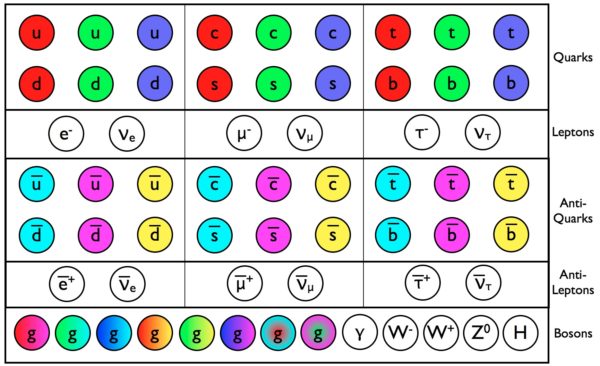
Aye, but we'd have little chance of getting to any particular spot any quicker, since the disconnect is to every available point in reality, and there's no more reason to think that it's possible to get to mars that way (for example) than to a galaxy far, far away.
Always figured that was what the navigators in the Dune series were doing: finding the (possibly hops) that take you to the desired point, rather than some random location in space.
Getting somewhere you didn't want to go really fast isn't a plus point.
"But there’s no physical difference, it’s just a beauty one. You may be thinking that if string theory is correct, then we have supersymmetry at some scale,"
No, it really was the beauty thing. If something is better and more simply described in one way, it's more liable to be true, see Occam. You're allowed to add more things if it makes more simplicity.
You'd still need more proof, though, to make it solid.
I will give you that "requires" was utterly the wrong word, though.
Tell me why singalarity has the evidence yet our aquations don,t add up..
Regarding higher dimensions...
I remember back in University spending much of a class going through a perturbative analysis that gave R^-2 as the only form of gravity that produced truly stable orbits; both R^-1 and R^-3 are unstable in the long term. The idea was that this implied that complex gravitational structures could only happen in three dimensions.
So working by this, either higher dimensions don't extend out over gravitationally significant distances (see also the manifold above) or somehow gravity just doesn't propagate along any extra dimensions.
"Tell me why singalarity has the evidence yet our aquations don,t add up.."
Tell us what you mean by "our equations don't add up".
"So working by this, either higher dimensions don’t extend out over gravitationally significant distances (see also the manifold above) or somehow gravity just doesn’t propagate along any extra dimensions."
Well, that's rather what was said. The other dimensions are rolled up so tight that there's nowhere to "fit" the gravitational field in. Or for the photon (or, indeed, graviton) to fit.